Groundwater Assessment Platform (GAP)
Groundwater quality information management system on geogenic contaminants
The Groundwater Assessment Platform (GAP) is an SDC-supported project to develop an online GIS-based data and information portal for groundwater-related questions, with a focus on geogenic contaminants such as arsenic, fluoride, iron, manganese and salinity. These naturally occurring groundwater pollutants affect 100’s of millions of people worldwide with minor to severe health problems. Gapmaps.org provides state-of the-art global arsenic and fluoride contamination risk maps and enables users to upload and map their data as well as to create their own groundwater quality models. In the GAP Wiki, users can share documents as well as discuss relevant issues in an open setting. GAP follows upon the Water Resource Quality (WRQ) project, which dealt with the mitigation of geogenic groundwater contamination and published the Geogenic Contamination Handbook.
Geogenic Contamination
Geogenic contamination refers to naturally occurring elevated concentrations of certain elements in groundwater (such as arsenic, fluoride, uranium, manganese or selenium) that have a negative health effect on humans consuming this water. Geogenic contamination of groundwater may be a result of geochemical characteristics of the aquifer material, e.g. high concentrations of the contaminant in the rock matrix that dissolve during water-rock interaction or environmental conditions such as an arid climate or reducing aquifers that favor the dissolution of the contaminant.
The most wide-spread geogenic contaminants are arsenic and fluoride, affecting the health of hundreds of millions of people worldwide.
Fluoride
Fluoride is the 13th most abundant element in the earth’s crust (625 mg/kg) and exists in trace amounts in almost all groundwaters across the world. According to estimations from UNESCO, more than 200 million people worldwide rely on drinking water with fluoride concentrations exceeding the present WHO guideline of 1.5 mg/L. Fluorosis, a disease associated with elevated fluoride concentrations in drinking water, is a serious health concern in many countries.
While low fluoride intake may prevent dental caries, excess intake causes different types of fluorosis: primarily dental and skeletal fluorosis. White line striations on the teeth followed by brown patches and, in severe cases, brittling of the enamel are common symptoms of dental fluorosis. This is not only a health problem but also has psychological and social impacts, as people are ashamed and possibly ostracised due to their bad teeth. Skeletal fluorosis first causes pain in different joints and can then limit joint movement, leading to stiffness and skeletal crippling. Besides dental and skeletal fluorosis, other manifestations such as nervousness, depression and muscle weakness have been reported in connection with high fluoride intake.
More information
Where does fluoride groundwater contamination occur?
What are the effects of fluoride on human health?
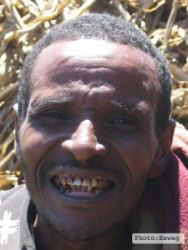
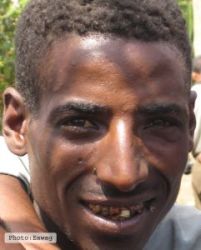
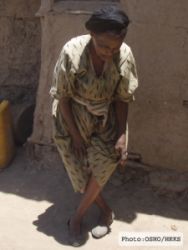
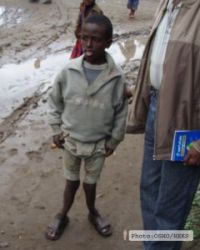
Arsenic
The WHO guideline value for arsenic in drinking water has been set to 10 µg/L, though in several countries higher values are used (e.g. 50 µg/L in Bangladesh).
High arsenic concentrations in groundwater have been found to be responsible for chronic health problems that fall under the term arsenicosis and develop over a period of several years. Symptoms of arsenicosis range from skin disorders (melanosis, keratosis) to cardiovascular diseases, cancer and the impairment of the neurodevelopment of children. Since there is no cure for arsenicosis to date, the provision of safe water for the prevention of this disease is the only mitigation approach.
More information
Where does arsenic groundwater contamination occur?
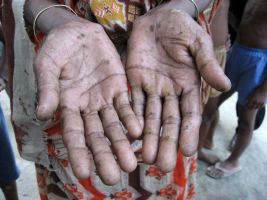
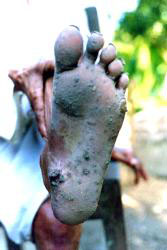
Team
The GAP team comprises geoscientists, modellers and programmers from the Eawag departments of: Water Resources and Drinking Water (W+T) and Water and Sanitation in Developing Countries (SANDEC).
GAP Team
Previous contributors
- Dr. Annette Johnson, Eawag, project Initiator
- Dr. Chris Zurbrügg, Eawag directorate
- Dr. Anja Bretzler
- Dr. Dahyann Araya
- Jay Matta, SDC / UNHCR
- Fabian Suter, Eawag
- Yuya Ling
- Dr. Manouchehr Amini
- Dr. Tobias Siegfried, Hydrosolutions
- Jakob Steiner
Partners
The GAP team is involved in collaborative projects with researchers in Brazil, Burkina Faso, Ethiopia, India, Pakistan and Ghana.


